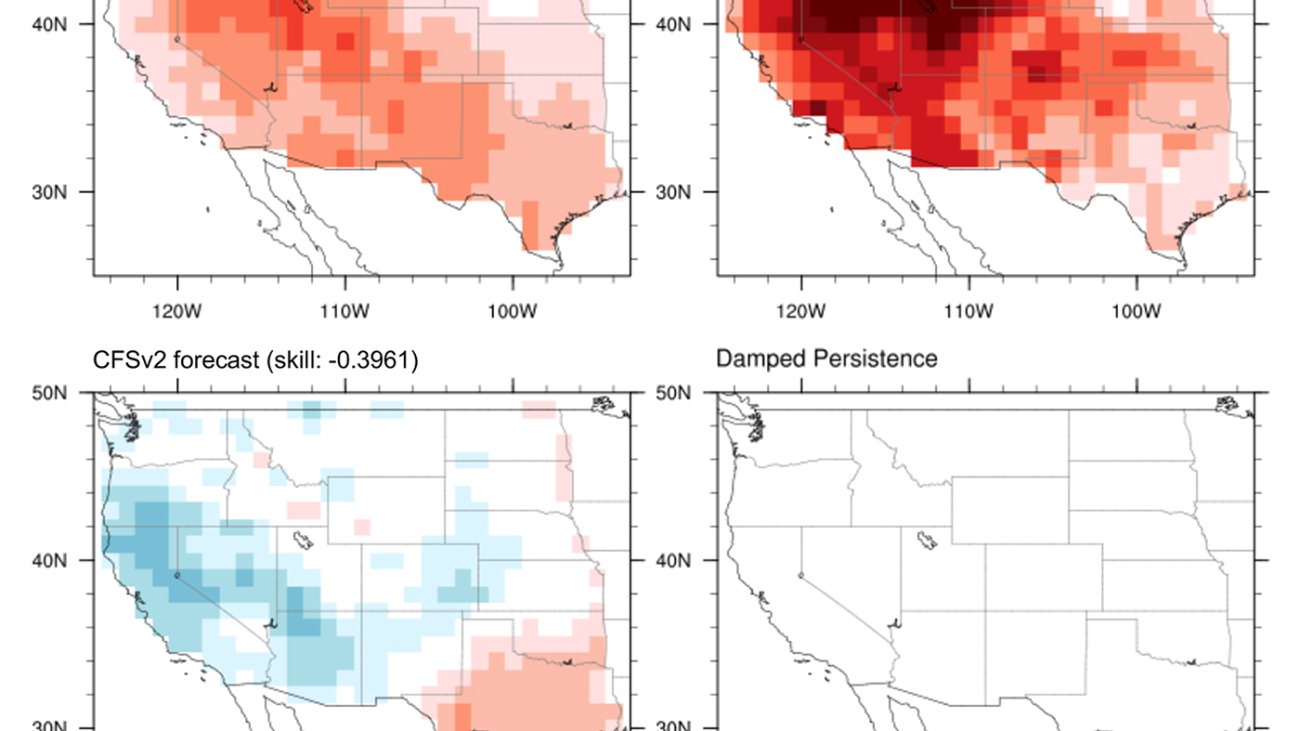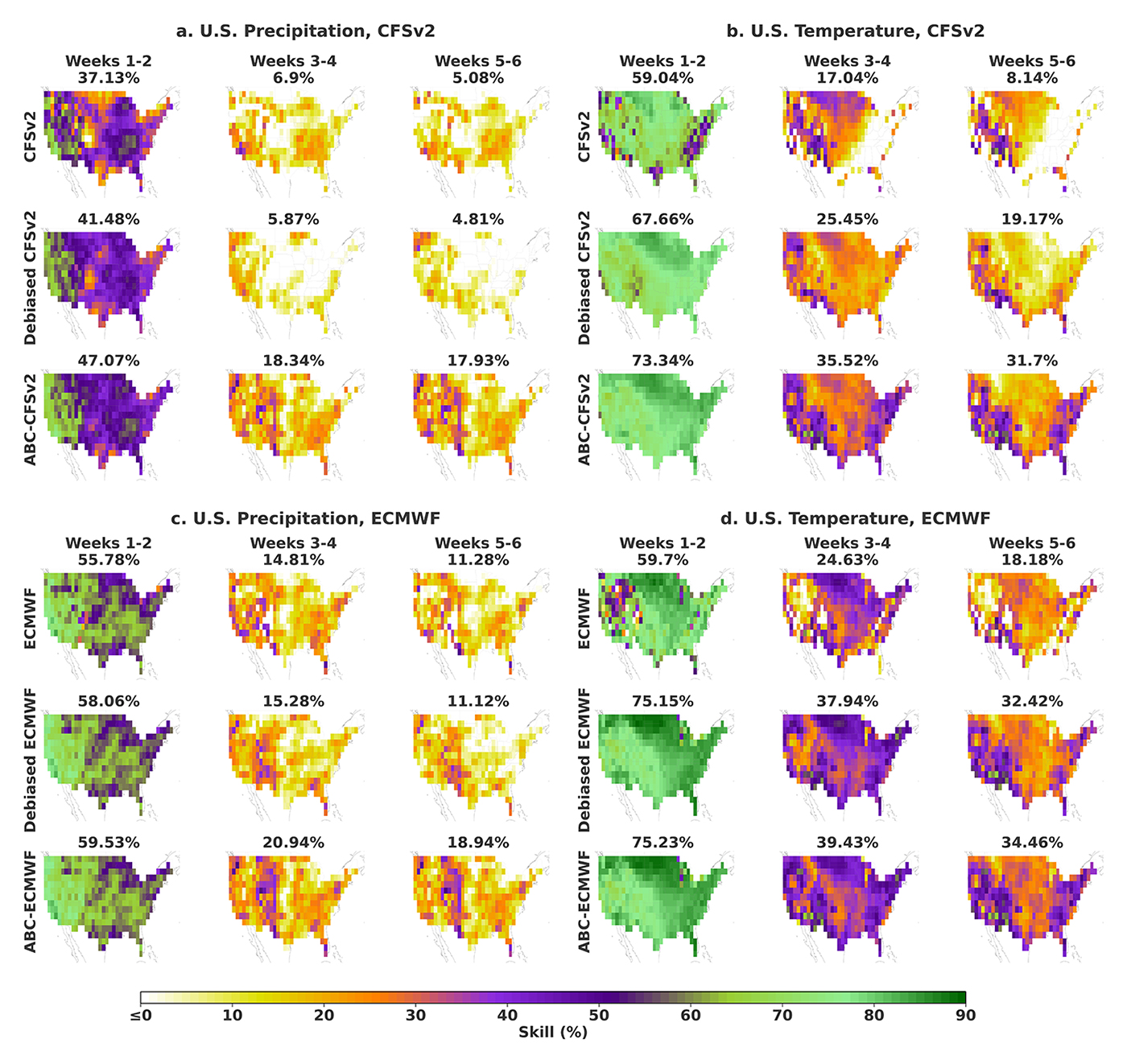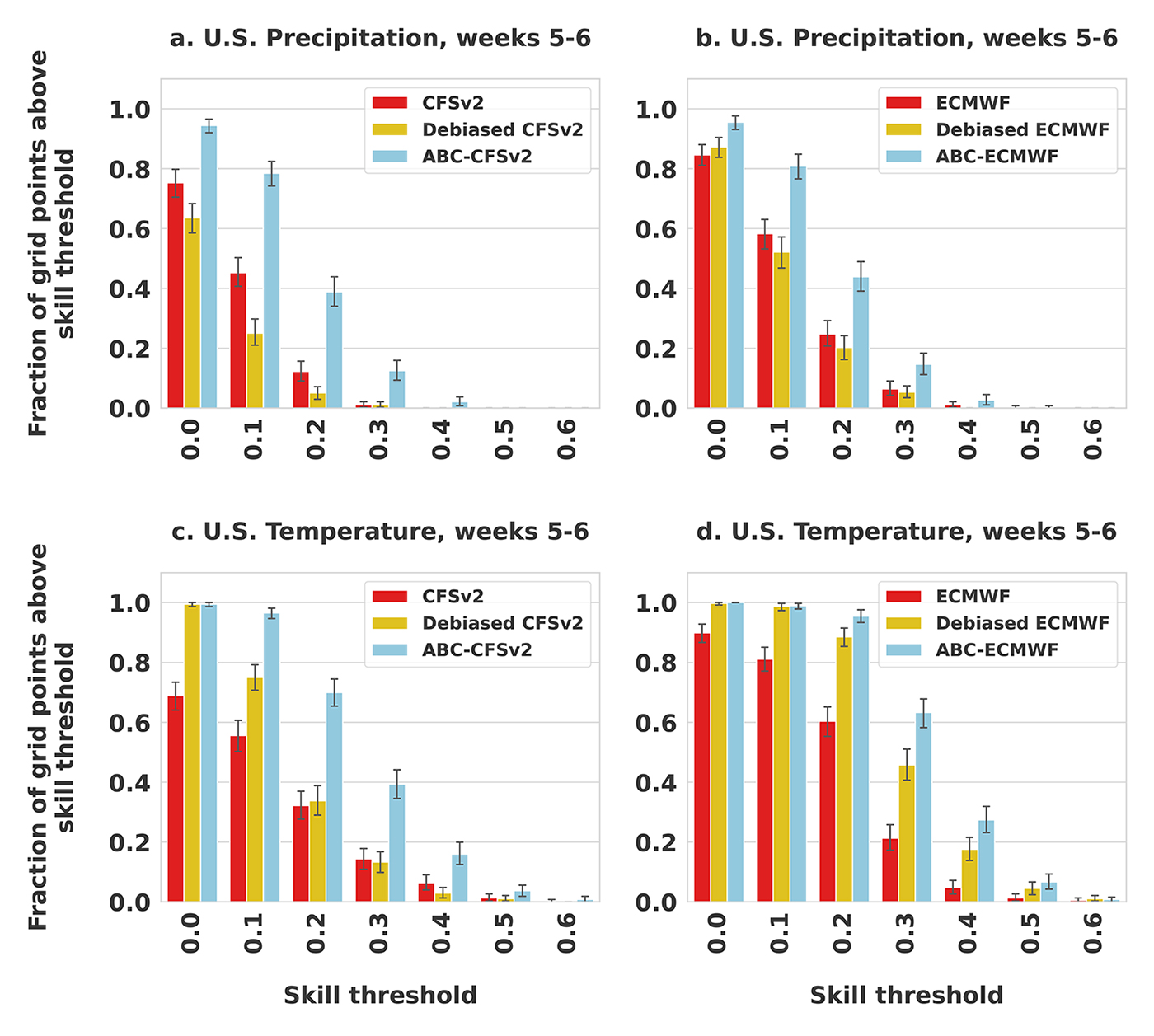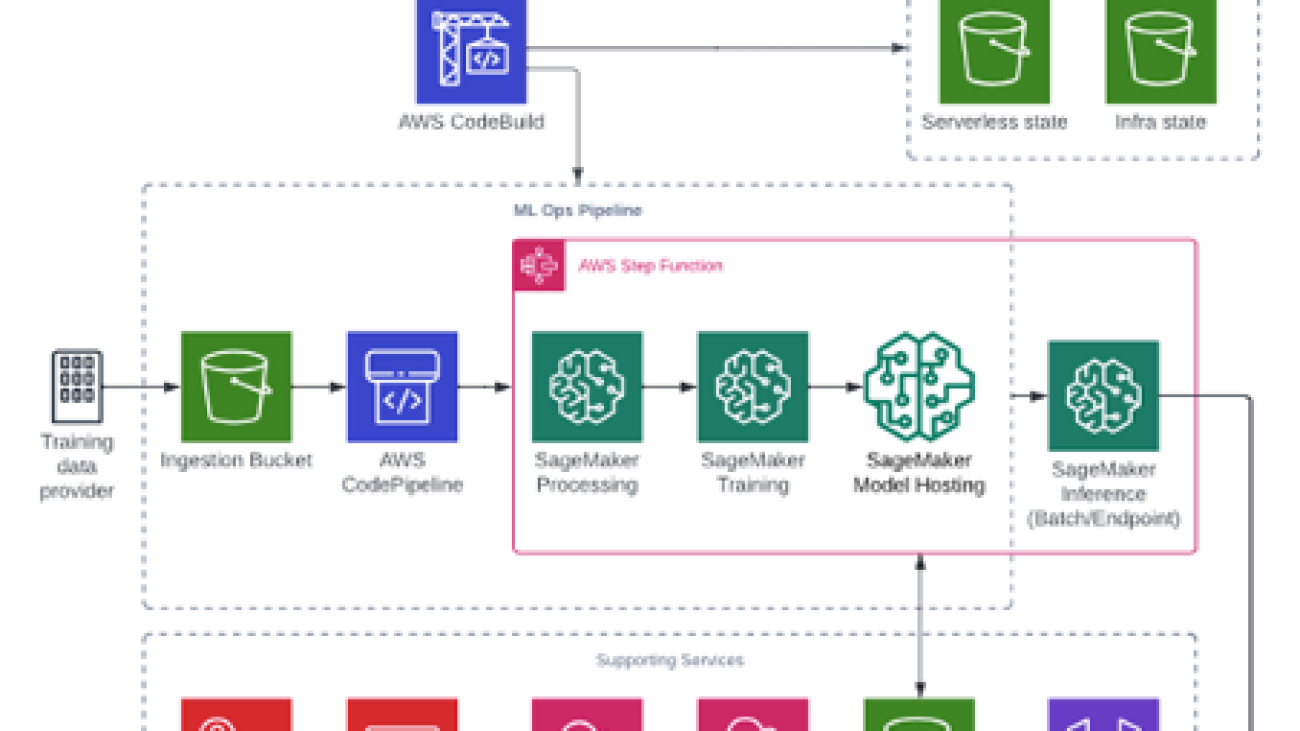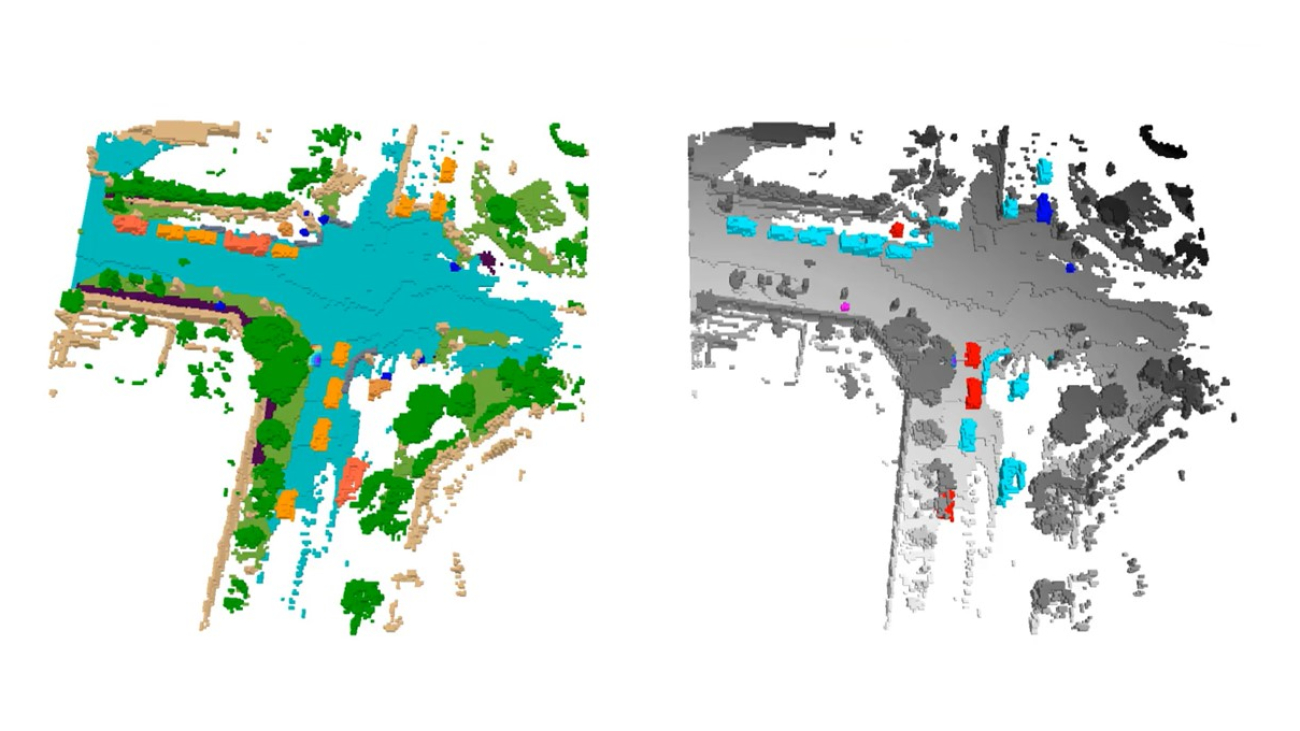
This week marks the beginning of the premier annual Computer Vision and Pattern Recognition conference (CVPR 2023), held in-person in Vancouver, BC (with additional virtual content). As a leader in computer vision research and a Platinum Sponsor, Google Research will have a strong presence across CVPR 2023 with 90 papers being presented at the main conference and active involvement in over 40 conference workshops and tutorials.
If you are attending CVPR this year, please stop by our booth to chat with our researchers who are actively exploring the latest techniques for application to various areas of machine perception. Our researchers will also be available to talk about and demo several recent efforts, including on-device ML applications with MediaPipe, strategies for differential privacy, neural radiance field technologies and much more.
You can also learn more about our research being presented at CVPR 2023 in the list below (Google affiliations in bold).
Board and organizing committee
Senior area chairs include: Cordelia Schmid, Ming-Hsuan Yang
Area chairs include: Andre Araujo, Anurag Arnab, Rodrigo Benenson, Ayan Chakrabarti, Huiwen Chang, Alireza Fathi, Vittorio Ferrari, Golnaz Ghiasi, Boqing Gong, Yedid Hoshen, Varun Jampani, Lu Jiang, Da-Cheng Jua, Dahun Kim, Stephen Lombardi, Peyman Milanfar, Ben Mildenhall, Arsha Nagrani, Jordi Pont-Tuset, Paul Hongsuck Seo, Fei Sha, Saurabh Singh, Noah Snavely, Kihyuk Sohn, Chen Sun, Pratul P. Srinivasan, Deqing Sun, Andrea Tagliasacchi, Federico Tombari, Jasper Uijlings
Publicity Chair: Boqing Gong
Demonstration Chair: Jonathan T. Barron
Program Advisory Board includes: Cordelia Schmid, Richard Szeliski
Panels
Scientific Discovery and the Environment
Best Paper Award candidates
MobileNeRF: Exploiting the Polygon Rasterization Pipeline for Efficient Neural Field Rendering on Mobile Architectures
Zhiqin Chen, Thomas Funkhouser, Peter Hedman, Andrea Tagliasacchi
DynIBaR: Neural Dynamic Image-Based Rendering
Zhengqi Li, Qianqian Wang, Forrester Cole, Richard Tucker, Noah Snavely
DreamBooth: Fine Tuning Text-to-Image Diffusion Models for Subject-Driven Generation
Nataniel Ruiz*, Yuanzhen Li, Varun Jampani, Yael Pritch, Michael Rubinstein, Kfir Aberman
On Distillation of Guided Diffusion Models
Chenlin Meng, Robin Rombach, Ruiqi Gao, Diederik Kingma, Stefano Ermon, Jonathan Ho, Tim Salimans
Highlight papers
Connecting Vision and Language with Video Localized Narratives
Paul Voigtlaender, Soravit Changpinyo, Jordi Pont-Tuset, Radu Soricut, Vittorio Ferrari
MaskSketch: Unpaired Structure-Guided Masked Image Generation
Dina Bashkirova*, Jose Lezama, Kihyuk Sohn, Kate Saenko, Irfan Essa
SPARF: Neural Radiance Fields from Sparse and Noisy Poses
Prune Truong*, Marie-Julie Rakotosaona, Fabian Manhardt, Federico Tombari
MAGVIT: Masked Generative Video Transformer
Lijun Yu*, Yong Cheng, Kihyuk Sohn, Jose Lezama, Han Zhang, Huiwen Chang, Alexander Hauptmann, Ming-Hsuan Yang, Yuan Hao, Irfan Essa, Lu Jiang
Region-Aware Pretraining for Open-Vocabulary Object Detection with Vision Transformers
Dahun Kim, Anelia Angelova, Weicheng Kuo
I2MVFormer: Large Language Model Generated Multi-View Document Supervision for Zero-Shot Image Classification
Muhammad Ferjad Naeem, Gul Zain Khan, Yongqin Xian, Muhammad Zeshan Afzal, Didier Stricker, Luc Van Gool, Federico Tombari
Improving Robust Generalization by Direct PAC-Bayesian Bound Minimization
Zifan Wang*, Nan Ding, Tomer Levinboim, Xi Chen, Radu Soricut
Imagen Editor and EditBench: Advancing and Evaluating Text-Guided Image Inpainting (see blog post)
Su Wang, Chitwan Saharia, Ceslee Montgomery, Jordi Pont-Tuset, Shai Noy, Stefano Pellegrini, Yasumasa Onoe, Sarah Laszlo, David J. Fleet, Radu Soricut, Jason Baldridge, Mohammad Norouzi, Peter Anderson, William Cha
RUST: Latent Neural Scene Representations from Unposed Imagery
Mehdi S. M. Sajjadi, Aravindh Mahendran, Thomas Kipf, Etienne Pot, Daniel Duckworth, Mario Lučić, Klaus Greff
REVEAL: Retrieval-Augmented Visual-Language Pre-Training with Multi-Source Multimodal Knowledge Memory (see blog post)
Ziniu Hu*, Ahmet Iscen, Chen Sun, Zirui Wang, Kai-Wei Chang, Yizhou Sun, Cordelia Schmid, David Ross, Alireza Fathi
RobustNeRF: Ignoring Distractors with Robust Losses
Sara Sabour, Suhani Vora, Daniel Duckworth, Ivan Krasin, David J. Fleet, Andrea Tagliasacchi
Papers
AligNeRF: High-Fidelity Neural Radiance Fields via Alignment-Aware Training
Yifan Jiang*, Peter Hedman, Ben Mildenhall, Dejia Xu, Jonathan T. Barron, Zhangyang Wang, Tianfan Xue*
BlendFields: Few-Shot Example-Driven Facial Modeling
Kacper Kania, Stephan Garbin, Andrea Tagliasacchi, Virginia Estellers, Kwang Moo Yi, Tomasz Trzcinski, Julien Valentin, Marek Kowalski
Enhancing Deformable Local Features by Jointly Learning to Detect and Describe Keypoints
Guilherme Potje, Felipe Cadar, Andre Araujo, Renato Martins, Erickson Nascimento
How Can Objects Help Action Recognition?
Xingyi Zhou, Anurag Arnab, Chen Sun, Cordelia Schmid
Hybrid Neural Rendering for Large-Scale Scenes with Motion Blur
Peng Dai, Yinda Zhang, Xin Yu, Xiaoyang Lyu, Xiaojuan Qi
IFSeg: Image-Free Semantic Segmentation via Vision-Language Model
Sukmin Yun, Seong Park, Paul Hongsuck Seo, Jinwoo Shin
Learning from Unique Perspectives: User-Aware Saliency Modeling (see blog post)
Shi Chen*, Nachiappan Valliappan, Shaolei Shen, Xinyu Ye, Kai Kohlhoff, Junfeng He
MAGE: MAsked Generative Encoder to Unify Representation Learning and Image Synthesis
Tianhong Li*, Huiwen Chang, Shlok Kumar Mishra, Han Zhang, Dina Katabi, Dilip Krishnan
NeRF-Supervised Deep Stereo
Fabio Tosi, Alessio Tonioni, Daniele Gregorio, Matteo Poggi
Omnimatte3D: Associating Objects and their Effects in Unconstrained Monocular Video
Mohammed Suhail, Erika Lu, Zhengqi Li, Noah Snavely, Leon Sigal, Forrester Cole
OpenScene: 3D Scene Understanding with Open Vocabularies
Songyou Peng, Kyle Genova, Chiyu Jiang, Andrea Tagliasacchi, Marc Pollefeys, Thomas Funkhouser
PersonNeRF: Personalized Reconstruction from Photo Collections
Chung-Yi Weng, Pratul Srinivasan, Brian Curless, Ira Kemelmacher-Shlizerman
Prefix Conditioning Unifies Language and Label Supervision
Kuniaki Saito*, Kihyuk Sohn, Xiang Zhang, Chun-Liang Li, Chen-Yu Lee, Kate Saenko, Tomas Pfister
Rethinking Video ViTs: Sparse Video Tubes for Joint Image and Video Learning (see blog post)
AJ Piergiovanni, Weicheng Kuo, Anelia Angelova
Burstormer: Burst Image Restoration and Enhancement Transformer
Akshay Dudhane, Syed Waqas Zamir, Salman Khan, Fahad Shahbaz Khan, Ming-Hsuan Yang
Decentralized Learning with Multi-Headed Distillation
Andrey Zhmoginov, Mark Sandler, Nolan Miller, Gus Kristiansen, Max Vladymyrov
GINA-3D: Learning to Generate Implicit Neural Assets in the Wild
Bokui Shen, Xinchen Yan, Charles R. Qi, Mahyar Najibi, Boyang Deng, Leonidas Guibas, Yin Zhou, Dragomir Anguelov
Grad-PU: Arbitrary-Scale Point Cloud Upsampling via Gradient Descent with Learned Distance Functions
Yun He, Danhang Tang, Yinda Zhang, Xiangyang Xue, Yanwei Fu
Hi-LASSIE: High-Fidelity Articulated Shape and Skeleton Discovery from Sparse Image Ensemble
Chun-Han Yao*, Wei-Chih Hung, Yuanzhen Li, Michael Rubinstein, Ming-Hsuan Yang, Varun Jampani
Hyperbolic Contrastive Learning for Visual Representations beyond Objects
Songwei Ge, Shlok Mishra, Simon Kornblith, Chun-Liang Li, David Jacobs
Imagic: Text-Based Real Image Editing with Diffusion Models
Bahjat Kawar*, Shiran Zada, Oran Lang, Omer Tov, Huiwen Chang, Tali Dekel, Inbar Mosseri, Michal Irani
Incremental 3D Semantic Scene Graph Prediction from RGB Sequences
Shun-Cheng Wu, Keisuke Tateno, Nassir Navab, Federico Tombari
IPCC-TP: Utilizing Incremental Pearson Correlation Coefficient for Joint Multi-Agent Trajectory Prediction
Dekai Zhu, Guangyao Zhai, Yan Di, Fabian Manhardt, Hendrik Berkemeyer, Tuan Tran, Nassir Navab, Federico Tombari, Benjamin Busam
Learning to Generate Image Embeddings with User-Level Differential Privacy
Zheng Xu, Maxwell Collins, Yuxiao Wang, Liviu Panait, Sewoong Oh, Sean Augenstein, Ting Liu, Florian Schroff, H. Brendan McMahan
NoisyTwins: Class-Consistent and Diverse Image Generation Through StyleGANs
Harsh Rangwani, Lavish Bansal, Kartik Sharma, Tejan Karmali, Varun Jampani, Venkatesh Babu Radhakrishnan
NULL-Text Inversion for Editing Real Images Using Guided Diffusion Models
Ron Mokady*, Amir Hertz*, Kfir Aberman, Yael Pritch, Daniel Cohen-Or*
SCOOP: Self-Supervised Correspondence and Optimization-Based Scene Flow
Itai Lang*, Dror Aiger, Forrester Cole, Shai Avidan, Michael Rubinstein
Shape, Pose, and Appearance from a Single Image via Bootstrapped Radiance Field Inversion
Dario Pavllo*, David Joseph Tan, Marie-Julie Rakotosaona, Federico Tombari
TexPose: Neural Texture Learning for Self-Supervised 6D Object Pose Estimation
Hanzhi Chen, Fabian Manhardt, Nassir Navab, Benjamin Busam
TryOnDiffusion: A Tale of Two UNets
Luyang Zhu*, Dawei Yang, Tyler Zhu, Fitsum Reda, William Chan, Chitwan Saharia, Mohammad Norouzi, Ira Kemelmacher-Shlizerman
A New Path: Scaling Vision-and-Language Navigation with Synthetic Instructions and Imitation Learning
Aishwarya Kamath*, Peter Anderson, Su Wang, Jing Yu Koh*, Alexander Ku, Austin Waters, Yinfei Yang*, Jason Baldridge, Zarana Parekh
CLIPPO: Image-and-Language Understanding from Pixels Only
Michael Tschannen, Basil Mustafa, Neil Houlsby
Controllable Light Diffusion for Portraits
David Futschik, Kelvin Ritland, James Vecore, Sean Fanello, Sergio Orts-Escolano, Brian Curless, Daniel Sýkora, Rohit Pandey
CUF: Continuous Upsampling Filters
Cristina Vasconcelos, Cengiz Oztireli, Mark Matthews, Milad Hashemi, Kevin Swersky, Andrea Tagliasacchi
Improving Zero-Shot Generalization and Robustness of Multi-modal Models
Yunhao Ge*, Jie Ren, Andrew Gallagher, Yuxiao Wang, Ming-Hsuan Yang, Hartwig Adam, Laurent Itti, Balaji Lakshminarayanan, Jiaping Zhao
LOCATE: Localize and Transfer Object Parts for Weakly Supervised Affordance Grounding
Gen Li, Varun Jampani, Deqing Sun, Laura Sevilla-Lara
Nerflets: Local Radiance Fields for Efficient Structure-Aware 3D Scene Representation from 2D Supervision
Xiaoshuai Zhang, Abhijit Kundu, Thomas Funkhouser, Leonidas Guibas, Hao Su, Kyle Genova
Self-Supervised AutoFlow
Hsin-Ping Huang, Charles Herrmann, Junhwa Hur, Erika Lu, Kyle Sargent, Austin Stone, Ming-Hsuan Yang, Deqing Sun
Train-Once-for-All Personalization
Hong-You Chen*, Yandong Li, Yin Cui, Mingda Zhang, Wei-Lun Chao, Li Zhang
Vid2Seq: Large-Scale Pretraining of a Visual Language Model for Dense Video Captioning (see blog post)
Antoine Yang*, Arsha Nagrani, Paul Hongsuck Seo, Antoine Miech, Jordi Pont-Tuset, Ivan Laptev, Josef Sivic, Cordelia Schmid
VILA: Learning Image Aesthetics from User Comments with Vision-Language Pretraining
Junjie Ke, Keren Ye, Jiahui Yu, Yonghui Wu, Peyman Milanfar, Feng Yang
You Need Multiple Exiting: Dynamic Early Exiting for Accelerating Unified Vision Language Model
Shengkun Tang, Yaqing Wang, Zhenglun Kong, Tianchi Zhang, Yao Li, Caiwen Ding, Yanzhi Wang, Yi Liang, Dongkuan Xu
Accidental Light Probes
Hong-Xing Yu, Samir Agarwala, Charles Herrmann, Richard Szeliski, Noah Snavely, Jiajun Wu, Deqing Sun
FedDM: Iterative Distribution Matching for Communication-Efficient Federated Learning
Yuanhao Xiong, Ruochen Wang, Minhao Cheng, Felix Yu, Cho-Jui Hsieh
FlexiViT: One Model for All Patch Sizes
Lucas Beyer, Pavel Izmailov, Alexander Kolesnikov, Mathilde Caron, Simon Kornblith, Xiaohua Zhai, Matthias Minderer, Michael Tschannen, Ibrahim Alabdulmohsin, Filip Pavetic
Iterative Vision-and-Language Navigation
Jacob Krantz, Shurjo Banerjee, Wang Zhu, Jason Corso, Peter Anderson, Stefan Lee, Jesse Thomason
MoDi: Unconditional Motion Synthesis from Diverse Data
Sigal Raab, Inbal Leibovitch, Peizhuo Li, Kfir Aberman, Olga Sorkine-Hornung, Daniel Cohen-Or
Multimodal Prompting with Missing Modalities for Visual Recognition
Yi-Lun Lee, Yi-Hsuan Tsai, Wei-Chen Chiu, Chen-Yu Lee
Scene-Aware Egocentric 3D Human Pose Estimation
Jian Wang, Diogo Luvizon, Weipeng Xu, Lingjie Liu, Kripasindhu Sarkar, Christian Theobalt
ShapeClipper: Scalable 3D Shape Learning from Single-View Images via Geometric and CLIP-Based Consistency
Zixuan Huang, Varun Jampani, Ngoc Anh Thai, Yuanzhen Li, Stefan Stojanov, James M. Rehg
Improving Image Recognition by Retrieving from Web-Scale Image-Text Data
Ahmet Iscen, Alireza Fathi, Cordelia Schmid
JacobiNeRF: NeRF Shaping with Mutual Information Gradients
Xiaomeng Xu, Yanchao Yang, Kaichun Mo, Boxiao Pan, Li Yi, Leonidas Guibas
Learning Personalized High Quality Volumetric Head Avatars from Monocular RGB Videos
Ziqian Bai*, Feitong Tan, Zeng Huang, Kripasindhu Sarkar, Danhang Tang, Di Qiu, Abhimitra Meka, Ruofei Du, Mingsong Dou, Sergio Orts-Escolano, Rohit Pandey, Ping Tan, Thabo Beeler, Sean Fanello, Yinda Zhang
NeRF in the Palm of Your Hand: Corrective Augmentation for Robotics via Novel-View Synthesis
Allan Zhou, Mo Jin Kim, Lirui Wang, Pete Florence, Chelsea Finn
Pic2Word: Mapping Pictures to Words for Zero-Shot Composed Image Retrieval
Kuniaki Saito*, Kihyuk Sohn, Xiang Zhang, Chun-Liang Li, Chen-Yu Lee, Kate Saenko, Tomas Pfister
SCADE: NeRFs from Space Carving with Ambiguity-Aware Depth Estimates
Mikaela Uy, Ricardo Martin Brualla, Leonidas Guibas, Ke Li
Structured 3D Features for Reconstructing Controllable Avatars
Enric Corona, Mihai Zanfir, Thiemo Alldieck, Eduard Gabriel Bazavan, Andrei Zanfir, Cristian Sminchisescu
Token Turing Machines
Michael S. Ryoo, Keerthana Gopalakrishnan, Kumara Kahatapitiya, Ted Xiao, Kanishka Rao, Austin Stone, Yao Lu, Julian Ibarz, Anurag Arnab
TruFor: Leveraging All-Round Clues for Trustworthy Image Forgery Detection and Localization
Fabrizio Guillaro, Davide Cozzolino, Avneesh Sud, Nicholas Dufour, Luisa Verdoliva
Video Probabilistic Diffusion Models in Projected Latent Space
Sihyun Yu, Kihyuk Sohn, Subin Kim, Jinwoo Shin
Visual Prompt Tuning for Generative Transfer Learning
Kihyuk Sohn, Yuan Hao, Jose Lezama, Luisa Polania, Huiwen Chang, Han Zhang, Irfan Essa, Lu Jiang
Zero-Shot Referring Image Segmentation with Global-Local Context Features
Seonghoon Yu, Paul Hongsuck Seo, Jeany Son
AVFormer: Injecting Vision into Frozen Speech Models for Zero-Shot AV-ASR (see blog post)
Paul Hongsuck Seo, Arsha Nagrani, Cordelia Schmid
DC2: Dual-Camera Defocus Control by Learning to Refocus
Hadi Alzayer, Abdullah Abuolaim, Leung Chun Chan, Yang Yang, Ying Chen Lou, Jia-Bin Huang, Abhishek Kar
Edges to Shapes to Concepts: Adversarial Augmentation for Robust Vision
Aditay Tripathi*, Rishubh Singh, Anirban Chakraborty, Pradeep Shenoy
MetaCLUE: Towards Comprehensive Visual Metaphors Research
Arjun R. Akula, Brendan Driscoll, Pradyumna Narayana, Soravit Changpinyo, Zhiwei Jia, Suyash Damle, Garima Pruthi, Sugato Basu, Leonidas Guibas, William T. Freeman, Yuanzhen Li, Varun Jampani
Multi-Realism Image Compression with a Conditional Generator
Eirikur Agustsson, David Minnen, George Toderici, Fabian Mentzer
NeRDi: Single-View NeRF Synthesis with Language-Guided Diffusion as General Image Priors
Congyue Deng, Chiyu Jiang, Charles R. Qi, Xinchen Yan, Yin Zhou, Leonidas Guibas, Dragomir Anguelov
On Calibrating Semantic Segmentation Models: Analyses and an Algorithm
Dongdong Wang, Boqing Gong, Liqiang Wang
Persistent Nature: A Generative Model of Unbounded 3D Worlds
Lucy Chai, Richard Tucker, Zhengqi Li, Phillip Isola, Noah Snavely
Rethinking Domain Generalization for Face Anti-spoofing: Separability and Alignment
Yiyou Sun*, Yaojie Liu, Xiaoming Liu, Yixuan Li, Wen-Sheng Chu
SINE: Semantic-Driven Image-Based NeRF Editing with Prior-Guided Editing Field
Chong Bao, Yinda Zhang, Bangbang Yang, Tianxing Fan, Zesong Yang, Hujun Bao, Guofeng Zhang, Zhaopeng Cui
Sequential Training of GANs Against GAN-Classifiers Reveals Correlated “Knowledge Gaps” Present Among Independently Trained GAN Instances
Arkanath Pathak, Nicholas Dufour
SparsePose: Sparse-View Camera Pose Regression and Refinement
Samarth Sinha, Jason Zhang, Andrea Tagliasacchi, Igor Gilitschenski, David Lindell
Teacher-Generated Spatial-Attention Labels Boost Robustness and Accuracy of Contrastive Models
Yushi Yao, Chang Ye, Gamaleldin F. Elsayed, Junfeng He
Workshops
Computer Vision for Mixed Reality
Speakers include: Ira Kemelmacher-Shlizerman
Workshop on Autonomous Driving (WAD)
Speakers include: Chelsea Finn
Multimodal Content Moderation (MMCM)
Organizers include: Chris Bregler
Speakers include: Mevan Babakar
Medical Computer Vision (MCV)
Speakers include: Shekoofeh Azizi
VAND: Visual Anomaly and Novelty Detection
Speakers include: Yedid Hoshen, Jie Ren
Structural and Compositional Learning on 3D Data
Organizers include: Leonidas Guibas
Speakers include: Andrea Tagliasacchi, Fei Xia, Amir Hertz
Fine-Grained Visual Categorization (FGVC10)
Organizers include: Kimberly Wilber, Sara Beery
Panelists include: Hartwig Adam
XRNeRF: Advances in NeRF for the Metaverse
Organizers include: Jonathan T. Barron
Speakers include: Ben Poole
OmniLabel: Infinite Label Spaces for Semantic Understanding via Natural Language
Organizers include: Golnaz Ghiasi, Long Zhao
Speakers include: Vittorio Ferrari
Large Scale Holistic Video Understanding
Organizers include: David Ross
Speakers include: Cordelia Schmid
New Frontiers for Zero-Shot Image Captioning Evaluation (NICE)
Speakers include: Cordelia Schmid
Computational Cameras and Displays (CCD)
Organizers include: Ulugbek Kamilov
Speakers include: Mauricio Delbracio
Gaze Estimation and Prediction in the Wild (GAZE)
Organizers include: Thabo Beele
Speakers include: Erroll Wood
Face and Gesture Analysis for Health Informatics (FGAHI)
Speakers include: Daniel McDuff
Computer Vision for Animal Behavior Tracking and Modeling (CV4Animals)
Organizers include: Sara Beery
Speakers include: Arsha Nagrani
3D Vision and Robotics
Speakers include: Pete Florence
End-to-End Autonomous Driving: Perception, Prediction, Planning and Simulation (E2EAD)
Organizers include: Anurag Arnab
End-to-End Autonomous Driving: Emerging Tasks and Challenges
Speakers include: Sergey Levine
Multi-Modal Learning and Applications (MULA)
Speakers include: Aleksander Hołyński
Synthetic Data for Autonomous Systems (SDAS)
Speakers include: Lukas Hoyer
Vision Datasets Understanding
Organizers include: José Lezama
Speakers include: Vijay Janapa Reddi
Precognition: Seeing Through the Future
Organizers include: Utsav Prabhu
New Trends in Image Restoration and Enhancement (NTIRE)
Organizers include: Ming-Hsuan Yang
Generative Models for Computer Vision
Speakers include: Ben Mildenhall, Andrea Tagliasacchi
Adversarial Machine Learning on Computer Vision: Art of Robustness
Organizers include: Xinyun Chen
Speakers include: Deqing Sun
Media Forensics
Speakers include: Nicholas Carlini
Tracking and Its Many Guises: Tracking Any Object in Open-World
Organizers include: Paul Voigtlaender
3D Scene Understanding for Vision, Graphics, and Robotics
Speakers include: Andy Zeng
Computer Vision for Physiological Measurement (CVPM)
Organizers include: Daniel McDuff
Affective Behaviour Analysis In-the-Wild
Organizers include: Stefanos Zafeiriou
Ethical Considerations in Creative Applications of Computer Vision (EC3V)
Organizers include: Rida Qadri, Mohammad Havaei, Fernando Diaz, Emily Denton, Sarah Laszlo, Negar Rostamzadeh, Pamela Peter-Agbia, Eva Kozanecka
VizWiz Grand Challenge: Describing Images and Videos Taken by Blind People
Speakers include: Haoran Qi
Efficient Deep Learning for Computer Vision (see blog post)
Organizers include: Andrew Howard, Chas Leichner
Speakers include: Andrew Howard
Visual Copy Detection
Organizers include: Priya Goyal
Learning 3D with Multi-View Supervision (3DMV)
Speakers include: Ben Poole
Image Matching: Local Features and Beyond
Organizers include: Eduard Trulls
Vision for All Seasons: Adverse Weather and Lightning Conditions (V4AS)
Organizers include: Lukas Hoyer
Transformers for Vision (T4V)
Speakers include: Cordelia Schmid, Huiwen Chang
Scholars vs Big Models — How Can Academics Adapt?
Organizers include: Sara Beery
Speakers include: Jonathan T. Barron, Cordelia Schmid
ScanNet Indoor Scene Understanding Challenge
Speakers include: Tom Funkhouser
Computer Vision for Microscopy Image Analysis
Speakers include: Po-Hsuan Cameron Chen
Embedded Vision
Speakers include: Rahul Sukthankar
Sight and Sound
Organizers include: Arsha Nagrani, William Freeman
AI for Content Creation
Organizers include: Deqing Sun, Huiwen Chang, Lu Jiang
Speakers include: Ben Mildenhall, Tim Salimans, Yuanzhen Li
Computer Vision in the Wild
Organizers include: Xiuye Gu, Neil Houlsby
Speakers include: Boqing Gong, Anelia Angelova
Visual Pre-Training for Robotics
Organizers include: Mathilde Caron
Omnidirectional Computer Vision
Organizers include: Yi-Hsuan Tsai
Tutorials
All Things ViTs: Understanding and Interpreting Attention in Vision
Hila Chefer, Sayak Paul
Recent Advances in Anomaly Detection
Guansong Pang, Joey Tianyi Zhou, Radu Tudor Ionescu, Yu Tian, Kihyuk Sohn
Contactless Healthcare Using Cameras and Wireless Sensors
Wenjin Wang, Xuyu Wang, Jun Luo, Daniel McDuff
Object Localization for Free: Going Beyond Self-Supervised Learning
Oriane Simeoni, Weidi Xie, Thomas Kipf, Patrick Pérez
Prompting in Vision
Kaiyang Zhou, Ziwei Liu, Phillip Isola, Hyojin Bahng, Ludwig Schmidt, Sarah Pratt, Denny Zhou
* Work done while at Google


